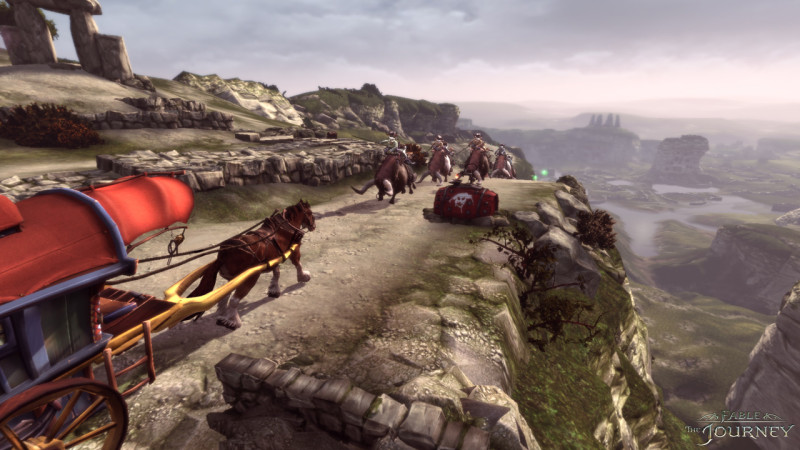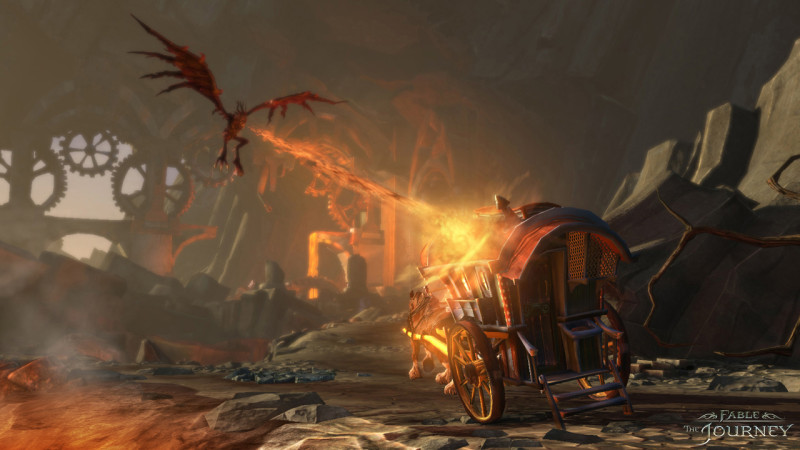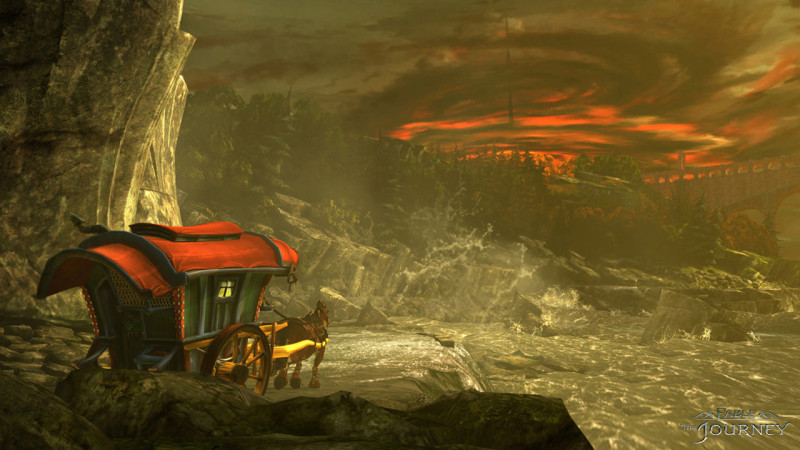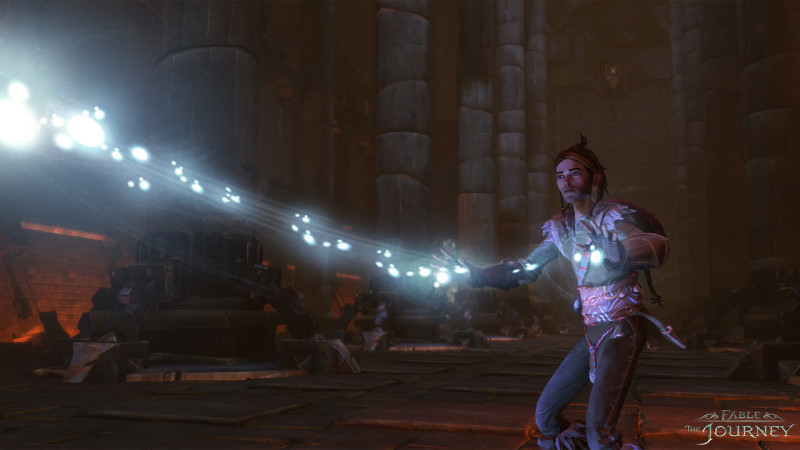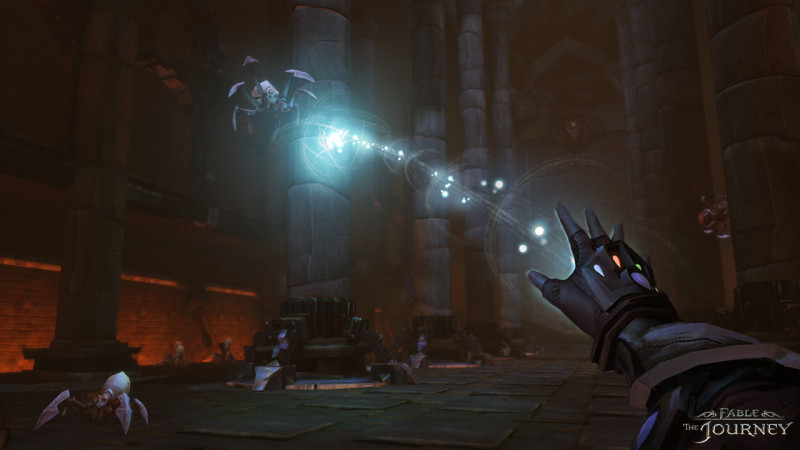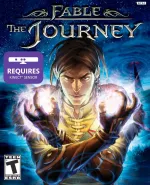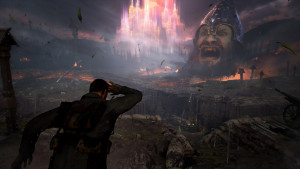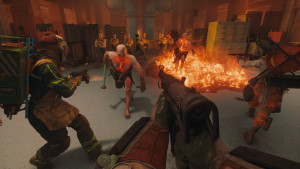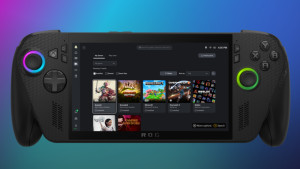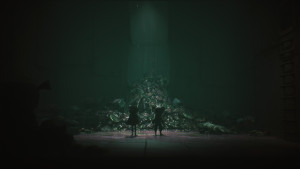Last chance for early bird pricing! Subscribe by June 25th to receive the debut issue
Fable: The Journey
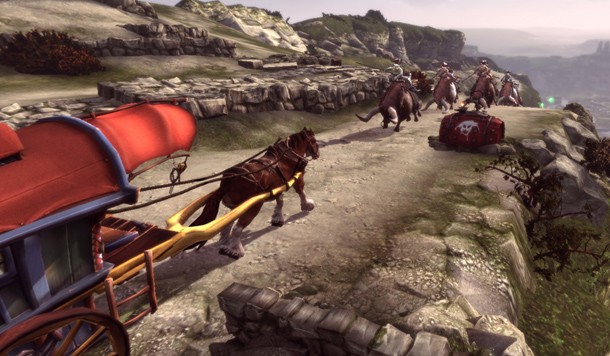
Peter Molyneux always possesses an unshakable enthusiasm about his projects, a trait that's obvious whenever he speaks on the Fable series. With Fable: The Journey, his aspirations have everything to do with tapping into the potential of Kinect. During a meeting at last week's Microsoft Spring Showcase, he explained to me that he's growing tired of the restrictions of a controller. "All the inventiveness, all the creativity, all the sense of discovery is lost with a controller," he said. "That's why I love Kinect."
Fable: The Journey is controlled exclusively with Kinect, although Molyneux was quick to mention that it isn't linear and that players can get off the horse and explore at any time. He said this while presenting a view of the game's world map, although no actual exploratory gameplay was shown during the 20-minute presentation.
He showed off a few demo sections during my brief time. First, he had me sit in a chair and guide the protagonist Gabriel and his horse down a path. At several points, the path forked but eventually re-joined together. Sometimes, only one path would feature glowing green XP orbs, so I attempted to guide my horse over them. Steering the horse was fairly responsive, and he usually stopped quickly when I pulled up on the reins.
At one point on the trail, a cutscene showed two Hobbes firing upon me with arrows from a nearby rock. One arrow lodged itself in my horse, who immediately began showing signs of pain. I scrambled to get out of harm's way, but mounted enemies began charging me on the road. While attempting to avoid them, my horse scraped against a nearby rock.
Eventually, I came to what appeared to be a safe area. The demo switched to a view that allowed me to pet the horse and remove the arrow. Molyneux instructed me to remove the arrow, so I hovered my hand over the area and pulled back. For some reason, Kinect reacted as if I had pressed in, and Gabriel hurt the horse by pushing the arrow further into its skin. I tried again, and the arrow came out smoothly. A scar was visible on my horse from scraping against the rock, but Molyneux told me that it wasn't deep enough to be permanent.
Molyneux stressed the importance of an emotional bond between the player and the horse. He wants the player to care enough to keep it healthy, and repeated several times that the horse loves you unconditionally. It sounds similar to his excitement over the dog in Fable II, but the horse appears to be more of a core element of The Journey's gameplay.
After I cared for the horse for a couple of minutes, Molyneux switched the demo over to an on-foot combat section. Several flying enemies were heading towards Gabriel, and I was instructed to experiment with the magic controls. I started motioning with my right hand as if I were throwing a baseball, causing powerful fireballs to destroy the creatures. Molyneux told me to try a more relaxed approach, so I casually started flicking my wrist towards the screen. This caused smaller balls of fire to be thrown, although at a much more rapid pace. I soon learned that magic can be re-directed in mid-flight with additional gestures.
I experimented with fireballs for a bit, and then switched to my left hand. This hand caused a tentacle-like creature to grab my enemies and fling them in whichever direction I chose. Combo opportunities were now available, as I could toss Hobbes into the air and then toss magic at them.
Once I took down all the enemies, Molyneux instructed me that there was one element of myself as "the controller" that I didn't utilize - my voice. For the fire magic, he explained that any angry voice will cause it to increase in power, yelling "Why won't you die?!" as an example. As for the tentacle, it will behave more predictably if you use a calm voice. He referenced Star Wars for this example, calmly saying "If you strike me down, I will return more powerful than you can ever imagine."
Molyneux's excitement over the potential of Kinect is evident, but how well the device works for Fable: The Journey remains to be fully seen. Most of my actions were represented correctly onscreen, but I felt that it might have been a little too hard to fail. Even when I flicked my wrist in a direction significantly away from enemies, my magic seemed to seek them out and hit the target anyway. The presentation was also specifically structured, so I wasn't able to experiment with exploration or any other features of the game. Molyneux promises that the game will feature many standbys of the RPG genre, including levelling up, collecting items, and customizing your character.
When I left the presentation, I didn't have a very clear idea of what to expect from the finished product. It's obviously going to be a very different experience than the core Fable series, but it all comes down to how well Kinect will work as the sole input device for an ambitious RPG. No release date has been set for Fable: The Journey, outside of a mention of it coming "several months" after XBLA's Fable Heroes.
